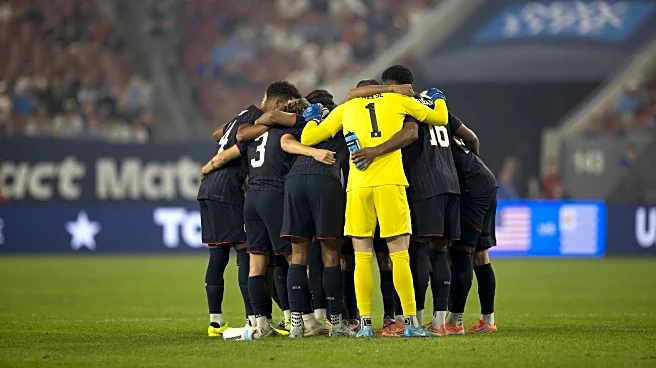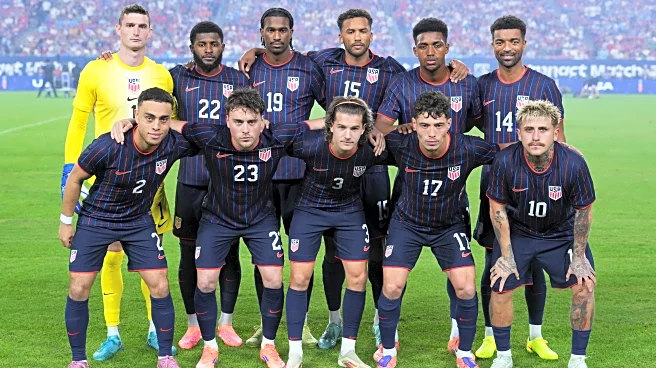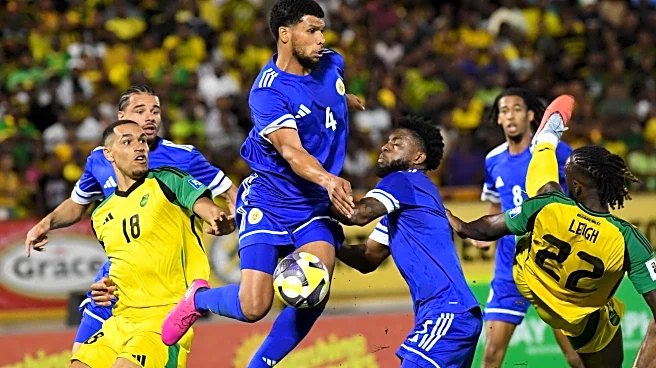The United States, Mexico, and Canada national teams have waited a long time as the rest of the world endured qualification for the 2026 World Cup. Now, as we are within reach of the World Cup Draw, which
takes place in Washington, DC on December 5th, the three teams can start to see the dawn of the final run to the tournament they are co-hosting beginning on June 11th.
World Cup qualifying began on October 12, 2023 with a first round qualifier between Myanmar and Macau. Myanmar’s Lwin Moe Aung scored the world’s first 2026 World Cup qualifying goal in their 5-1 win. Now, over two years later, we know 39 of the teams that will join the three co-hosts in the field of 48. Six more teams will book their trip through either the UEFA playoff or the inter-confederation playoff in March.
Now that the World Cup is starting to hit the horizon, we take a look at which teams have qualified, which teams still have hope, how the co-hosts performed during the fall, and what’s next for the co-hosts as we advance closer to the turn of the calendar to a World Cup year.
Qualified Teams
There are a total of 42 teams, including the co-hosts, that have qualified for the 2026 World Cup:
Concacaf – USA (host), Canada (host), Mexico (host), Panama, Haiti, Curaçao (debut)
Conmebol – Argentina, Brazil, Ecuador, Uruguay, Colombia, Paraguay
Oceania – New Zealand
AFC – Japan, Iran, Uzbekistan (debut), South Korea, Jordan (debut), Australia, Qatar, Saudi Arabia
CAF – Morocco, Tunisia, Egypt, Algeria, Ghana, Cape Verde (debut), South Africa, Ivory Coast, Senegal
UEFA – England, France, Croatia, Portugal, Norway, Germany, Netherlands, Belgium, Austria, Switzerland, Spain, Scotland
The inter-confederation playoff sees six teams vying for 2 more spots in the tournament: two from Concacaf (Jamaica, Suriname) and one each from Africa (DR Congo), Asia (Iraq), South America (Bolivia), and Oceania (New Caldeonia). They will contest the two playoff brackets in Guadalajara and Monterrey in March:
The UEFA playoff has 16 teams who will fight for the four remaining UEFA spots in the World Cup. There were 12 teams – Italy, Denmark, Turkey, Ukraine, Poland, Wales, Czechia, Slovakia, Ireland, Albania, Bosnia & Herzegovina, and Kosovo – who qualified by finishing second in their qualifying group. Four more teams – Sweden, Romania, North Macedonia, and Northern Ireland – qualified by being the best ranked UEFA Nations League group winners that finished outside of the top 2 in their group. The UEFA playoffs will also take place in March.
The Co-Hosts had a mixed fall
While the rest of the world was participating in World Cup qualifying, the co-hosts were lining up friendlies to prepare themselves for the tournament. Because each of them needed friendlies, they were able to line up similar opponents and give us something to compare. How did each of the teams do? Well, it was mixed.
USA – 4W-1L-1D
September 6th – USA 0-2 South Korea
September 9th – USA 2-0 Japan
October 10th – USA 1-1 Ecuador
October 14th – USA 2-1 Australia
November 15th – USA 2-1 Paraguay
November 18th – USA 5-1 Uruguay
The USMNT was the only co-host that played each of its matches at home. They got off to a rough start, getting thumped 2-0 by South Korea. However, they showed some tangible improvement as the fall progressed. Against teams that had already qualified for the World Cup, they went unbeaten in their final five matches, culminating with a 5-1 thrashing of Uruguay on Tuesday.
Mexico – 0W-2L-4D
September 6th – Mexico 0-0 Japan (Oakland)
September 9th – Mexico 2-2 South Korea (Nashville)
October 11th – Mexico 0-4 Colombia (Dallas-Fort Worth)
October 14th – Mexico 1-1 Ecuador
November 15th – Mexico 0-0 Uruguay
November 18th – Mexico 1-2 Paraguay (San Antonio)
Mexico had a terrible fall, failing to win in six matches against World Cup-bound teams. They only played two games at home, opting to spend much of their time playing in the United States. The 4-0 loss to Colombia on October 11th was a huge signal that El Tri have a lot of work to do.
Canada – 3W-1L-2D
September 5th – Romania 0-3 Canada
September 9th – Wales 0-1 Canada
October 10th – Canada 0-1 Australia
October 14th – Colombia 0-0 Canada (Harrison, NJ)
November 13th – Canada 0-0 Ecuador
November 18th – Venezuela 0-2 Canada (Fort Lauderdale)
Canada is the only co-host that spent some time outside of North America in the fall. In September, they had a successful trip to Europe, beating Romania and Wales without conceding a goal. They had one loss in October to Australia and a couple of draws. They also played a couple of matches in the United States, opting to play only 2 matches at home.
The World Cup Draw is next up
Next up for everyone: the World Cup Draw, which takes place at the Kennedy Center in Washington, DC on December 5th. There, all 42 teams and 6 playoff paths will be drawn into groups. With the release of the November 2025 FIFA world rankings, the seeded pot seems set. The USMNT, Mexico, and Canada are seeded as co-hosts and have already been predrawn into groups – Group A for Mexico, Group B for Canada, and Group D for the United States. The full pot list has yet to be released by FIFA, but all three co-hosts are looking for a favorable draw that could see them play home matches in the group stage and set themselves up for a deep run in the tournament.
Final preparations are in sight
Now, with no more matches to be played in 2025, the next window is in March, which will be the last before teams will have to name their World Cup rosters. The USMNT, Mexico, and Canada, will each line up some big-time friendlies for March and early June before the World Cup begins, but now it’s about figuring out those final details and getting everything ready to host the world’s biggest tournament ever.













